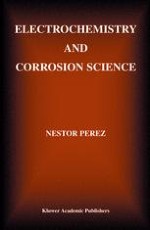2004 | Buch
Über dieses Buch
Electrochemistry and Corrosion Science is a graduate level text/professional reference that describes the types of corrosion on metallic materials. The focus will be on modeling and engineering approximation schemes that describe the thermodynamics and kinetics of electrochemical systems. The principles of corrosion behavior and metal recovery are succinctly described with the aid of pictures, figures, graphs and schematic models, followed by derivation of equations to quantify relevant parameters. Example problems are included to illustrate the application of electrochemical concepts and mathematics for solving complex corrosion problems.
This book differs from others in that the subject matter is organized around the modeling and predicating approaches that are used to determine detrimental and beneficial electrochemical events. Thus, this book will take a more practical approach and make it especially useful as a basic text and reference for professional engineers.
Anzeige
